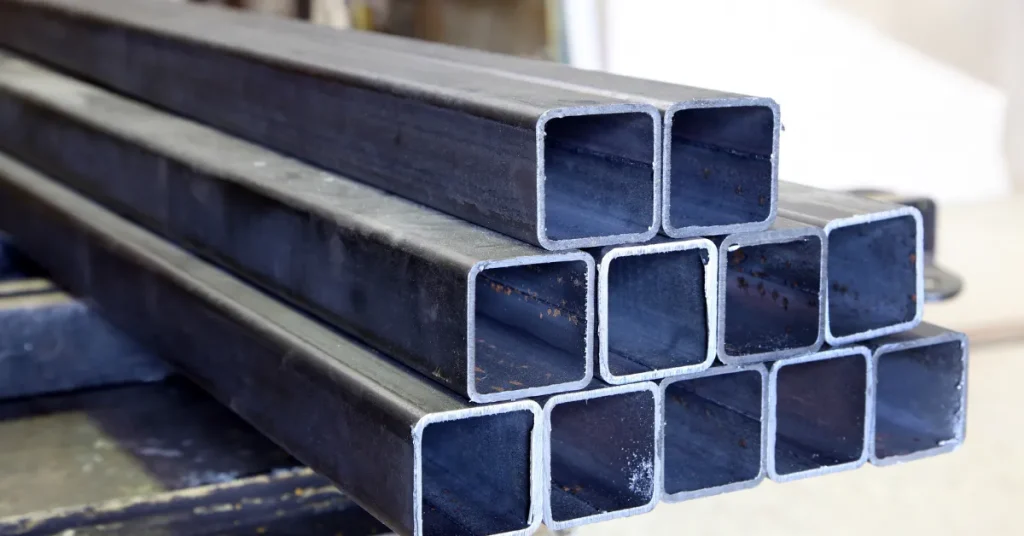20 gauge metal typically measures 0.0359 inches (0.912 millimeters) thick. Precisely, it’s a thin, versatile material used in a variety of projects.
Exploring the world of sheet metal, one might discover that 20 gauge metal strikes a balance between flexibility and strength, making it a popular choice in the metalworking field.
Its thickness allows for easy cutting and shaping while maintaining enough rigidity for structural uses.
Whether you’re engaged in construction, automotive work, or crafting, understanding this specific gauge can prove instrumental in selecting the right material for your project.
The 20 gauge thickness is a standard measure in not just ferrous metals, but also in stainless steel and aluminum, providing a consistent benchmark for contractors, architects, and hobbyists alike.
Hence, acknowledging this dimension is essential for anyone involved with metal fabrication, roofing, or interior design projects where precision and durability are vital.

The Basics Of Metal Gauge
Understanding metal gauge is vital when working on projects that require metal sheets. The term gauge refers to the thickness of metal.
It may seem backwards, but the higher the gauge number, the thinner the metal.
This important measure tells industries how to use each metal type.
Gauge Measurement Explained
Gauge is a numerical rating system used to describe metal thickness.
Although it might sound straightforward, the gauge system is quite complex.
It changes with the metal type due to metals’ varying densities and compositions.
For instance, a 20 gauge thickness will differ between materials such as stainless steel, galvanized steel, aluminum, or copper.
The table below breaks down the thickness in inches and millimeters for a 20 gauge sheet metal.
| Material | Thickness (Inches) | Thickness (Millimeters) |
| Stainless Steel | 0.0359 | 0.912 |
| Galvanized Steel | 0.0359 | 0.912 |
| Aluminum | 0.0320 | 0.812 |
| Copper | 0.0323 | 0.820 |
Comparing Different Metal Types And Gauges
Various metal types have different standard gauges.
This makes comparisons essential before making a decision.
Here’s what you need to know:
- Ferrous metals like steel and iron usually measure in thicker gauges.
- Non-ferrous metals, such as aluminum and copper, come in wider gauge varieties.
- 20 gauge aluminum is thinner than 20 gauge steel due to its lower density.
When selecting a metal sheet, always consider the gauge in relation to the metal type.
This choice affects durability, weight, and usability.
Unlocking 20 Gauge Specifications

Understanding the thickness of 20 gauge metal is vital for crafts, construction, and DIY projects. This guide provides insights into the dimensions and applications of 20 gauge metal sheets, ensuring you choose the right material for your needs.
20 Gauge In Inches And Millimeters
Knowing the thickness of 20 gauge metal is essential for precision in crafting and fabrication. In inches, 20 gauge metal measures approximately 0.0359 inches thick. When converting to millimeters, the equivalent is about 0.9119 mm. These dimensions represent the thickness of the sheet without any coatings or finishes.
| Gauge | Inches | Millimeters |
| 20 | 0.0359 | 0.9119 |
Common Uses Of 20 Gauge Metal
20 gauge metal sheets are popular due to their versatility. List of applications includes:
- Automotive – body repair and part fabrication
- HVAC – ductwork and vent fabrication
- Jewelry-making – durable yet workable for crafting
- Art projects – sculpts and metal art pieces
- Construction – framing, roofing, and siding details
Each application benefits from the strength and flexibility that 20 gauge steel provides.
Strength And Durability
Understanding the strength and durability of 20 gauge metal is vital for selecting the right material for your project. This thickness is often used in applications ranging from HVAC ducts to automotive panels.
Its robustness and longevity are determined by a blend of its gauge and intrinsic material properties.
Metal Thickness And Strength Relationship
The thickness of metal sheets has a direct correlation with their strength. A lower gauge number indicates a thicker sheet which usually translates into higher strength. Here’s how this relationship plays out:
- Higher Resistance: Thicker metals resist deformation better.
- Better Load-Bearing: They can support greater weights without bending.
- Less Puncture Risk: Thicker gauges are harder to puncture or tear.
Specifically, 20 gauge metal, which is approximately 0.0359 inches or 0.912 millimeters thick, strikes a balance between flexibility and sturdiness.
Durability Factors For 20 Gauge Metal
Durability in metals like the 20 gauge variety depends on several factors:
| Factor | Impact on Durability |
| Material Composition | Some metals are inherently stronger and more durable. |
| Corrosion Resistance | Important for longevity, especially in harsh environments. |
| Surface Treatment | Coatings can protect the metal from wear and tear. |
| Work Hardening | Processes that harden the metal can also make it more durable. |
For 20 gauge steel, galvanization is a common method to enhance corrosion resistance, thereby improving its lifespan.
Overall, the 20 gauge metal offers a reliable option for projects demanding a balance between pliability and resilience. Selecting and treating this metal gauge correctly promises longevity and performance in a variety of applications.
Working With 20 Gauge Metal
When engaging with 20 gauge metal, understanding its properties is crucial. 20 gauge metal has a thickness of 0.0359 inches or approximately 0.9 millimeters. It strikes the right balance between flexibility and strength.
This makes it a preferred choice for various projects, including jewelry making, automotive repairs, and HVAC applications.
Tools For Cutting And Shaping
To start working with 20 gauge metal, one needs the right set of tools. The essential tools to have include:
- Metal shears: Ideal for cutting the metal to size.
- Nibbler: A nibbler makes intricate cuts or patterns in the metal.
- Sheet metal brake: This tool helps in making precise bends.
- Hammer and anvil or block: Essential for shaping and flattening.
- Files and sandpaper: For smoothing edges after cutting.
Using these tools allows for custom shapes and sizes, ensuring creative freedom and high precision in metalwork projects.
Safety Considerations
Safety must be a priority when handling 20 gauge metal. Here are some safety tips:
- Wear protective gloves: Prevents cuts from sharp metal edges.
- Use safety goggles: Shields eyes from metal shavings and dust.
- Ensure adequate ventilation: Especially when soldering or welding.
- Keep a first-aid kit close by: Prepares for any minor injuries.
- Follow tool instructions: Reduces risk of accidents.
Adhering to these safety measures will not only provide protection but also enhance the quality of your work with 20 gauge metal.
20 Gauge In Industry And Craftsmanship

The matchless versatility of 20-gauge metal sheets figures prominently in diverse industries and artisan crafts. Their slim profile, roughly 0.036 inches or about 0.91 millimeters thick, balances durability with ease of manipulation.
This unique thickness finds favor in both robust industrial applications and intricate crafts and DIY projects.
Industrial Applications
In the realm of industrial use, 20-gauge metal stands out for its adaptability and strength. Key applications include:
- HVAC ductwork, where metal must withstand pressure but remain lightweight;
- Automotive parts, valued for the balance between weight and structural integrity;
- Building materials such as roofing and siding, where they provide protection without excessive bulk;
Each field relishes the gauge’s combination of pliability and sturdiness. For instance, manufacturers seamlessly integrate this metal into machines due to its resilience.
Crafts And Diy Projects
Creatives and hobbyists also embrace 20-gauge metal. Its applications span numerous DIY spheres:
- Prized in jewelry making for its workability and durability;
- Used to create decorative art pieces that can withstand handling and time;
- Employed in home decor items, from wall art to fixtures for a customized touch.
In workshops and home studios, artisans mold and cut this metal into bespoke items that fuse beauty with longevity.
Comparative Analysis
Insight into metal thickness is crucial, particularly in projects demanding precision. This section explores how 20 gauge metal stacks against 18 and 22 gauges.
It also covers when to opt for a 20 gauge selection. Understanding these subtle differences supports informed decision-making for your projects.
20 Gauge Versus 18 And 22 Gauges
Thickness matters in metalworking. 20 gauge metal is a common, mid-range thickness. It’s not as thick as 18 gauge, but it’s sturdier than 22 gauge.
| Gauge Number | Thickness (inches) | Thickness (millimeters) |
| 18 | 0.0478 | 1.214 |
| 20 | 0.0359 | 0.912 |
| 22 | 0.0299 | 0.759 |
A clear pattern emerges. As the gauge number increases, the metal gets thinner.
When To Choose 20 Gauge Over Others
- Balance between flexibility and strength.
- Ideal for detailed work that needs slight rigidity.
- Perfect for HVAC systems, as it offers durability without being too heavy.
- Automotive repairs often require this balance that 20 gauge provides.
- Jewelry makers favor 20 gauge for its malleability and durability.
Choose 18 gauge for more structural support. Opt for 22 gauge when more pliability is needed.
FAQs About How Thick Is 20 Gauge Metal
How Thick Is 20 Gauge Metal In Inches?
20 gauge metal typically measures 0. 0359 inches thick.
How Heavy Is 20 Gauge Sheet Metal?
The weight of 20 gauge sheet metal depends on the material, but for steel, it averages 1. 5 pounds per square foot.
What Gauge Is Thicker 16 Or 20?
Gauge 16 is thicker than gauge 20 when comparing metal thickness. Higher gauge numbers indicate thinner materials.
How Thick Is 10 Gauge Steel?
10 gauge steel is approximately 0. 1345 inches or 3. 416 millimeters thick. This measurement reflects standard steel gauge thickness.
Conclusion
Understanding the specifics of 20 gauge metal is vital for any project. This measurement reflects a thickness of roughly 0. 8mm.
Whether you’re in construction or crafting, knowing this detail ensures accuracy in your work. Choose the right gauge for success.
Resources:
1. https://www.law.cornell.edu/uscode/text/15/206
